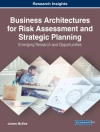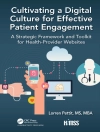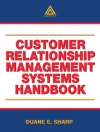In this revised second edition, Baggio and Klobas build upon the work of their previous volume, offering a presentation of quantitative research methods for tourism researchers. This accessible and rigorous guide goes beyond the approaches usually covered in introductory textbooks on quantitative methods to consider useful techniques for statistical inquiry into tourism matters of all but the most econometrically complex kind. The first part of the book concerns common issues in statistical analysis of data and the most widely-used techniques, while the second part describes and discusses several newer and less common approaches to data analysis that are valuable for tourism researchers and analysts.
Updates to the second edition include:
• a new chapter on “Big Data”
• consideration of data screening and cleaning
• the use of similarity and diversity indexes for comparing samples
• observations about the partial least squares (PLS) approach to path modelling
• a new section on multi-group structural equation modelling
• a new section on common method variance and its treatment
• revised and updated section on software
• fully updated references and examples
Spis treści
Foreword
Introduction to the Second Edition
Introduction
Part I – The Analysis of Data
Introduction to Part I
Chapter 1 – The Nature of Data in Tourism
Chapter 2 – Testing Hypotheses and Comparing Samples
Chapter 3 – Data Reduction
Chapter 4 – Model Building
Chapter 5 – Time Dependent Phenomena and Forecasting
Part II – Numerical Methods
Introduction to Part II
Chapter 6 – Maximum Likelihood Estimation
Chapter 7 – Monte Carlo Methods
Chapter 8 – Big Data
Chapter 9 – Simulations and Agent-Based Modelling
Appendix: Software Programs
O autorze
Jane Klobas is an Education and Research Consultant, based in Australia and Italy. She is an Adjunct Professor at Murdoch University, Australia and a Visiting Professor at the University of Bergamo, Italy and other universities in Europe and Asia. Her interests include research development, adult learning, knowledge and information management and applications of the theory of planned behaviour.












